History > MARK SCHEMES > GCE History A Y108/01: The Early Stuarts and the origins of the Civil War 1603-1660 Advanced GCE Mar (All)
GCE History A Y108/01: The Early Stuarts and the origins of the Civil War 1603-1660 Advanced GCE Mark Scheme for November 2020
Document Content and Description Below
GCE History A Y108/01: The Early Stuarts and the origins of the Civil War 1603-1660 Advanced GCE Mark Scheme for November 2020 Oxford Cambridge and RSA Examinations GCE History A Y108/01: The Earl... y Stuarts and the origins of the Civil War 1603-1660 Advanced GCE Mark Scheme for November 2020Oxford Cambridge and RSA Examinations OCR (Oxford Cambridge and RSA) is a leading UK awarding body, providing a wide range of qualifications to meet the needs of candidates of all ages and abilities. OCR qualifications include AS/A Levels, Diplomas, GCSEs, Cambridge Nationals, Cambridge Technicals, Functional Skills, Key Skills, Entry Level qualifications, NVQs and vocational qualifications in areas such as IT, business, languages, teaching/training, administration and secretarial skills. It is also responsible for developing new specifications to meet national requirements and the needs of students and teachers. OCR is a not-for-profit organisation; any surplus made is invested back into the establishment to help towards the development of qualifications and support, which keep pace with the changing needs of today’s society. This mark scheme is published as an aid to teachers and students, to indicate the requirements of the examination. It shows the basis on which marks were awarded by examiners. It does not indicate the details of the discussions which took place at an examiners’ meeting before marking commenced. All examiners are instructed that alternative correct answers and unexpected approaches in candidates’ scripts must be given marks that fairly reflect the relevant knowledge and skills demonstrated. Mark schemes should be read in conjunction with the published question papers and the report on the examination. © OCR 2020Y108/01 Mark Scheme November 2020 2 Annotations Annotation Meaning of annotation Blank Page Highlight Off-page comment Assertion Analysis Evaluation Explanation Factor Illustrates/Describes Irrelevant, a significant amount of material that does not answer the question Judgement Knowledge and understanding Provenance Simple comment Unclear ViewY108/01 Mark Scheme November 2020 3 MARK SCHEME Section A Question Answer/Indicative content Mark Guidance 1 Using these four sources in their historical context, assess how far they support the view that religious division was the most important reason for the failure to achieve a political settlement in the period from 1646 to 1649. • In discussing how Source A does or does not support the view, answers might refer to the rule of bishops and the clergy teaching obedience, as well as the importance of control over the militia. • In discussing the provenance of Source A, answers might consider that it is a letter from Charles to his wife. • In discussing the historical context of Source A, answers might consider that Parliament sent Charles a series of proposals following his surrender to the Scots and that he evaded answering them hoping to achieve better terms. • In discussing how Source B does support the view, answers might refer to the dominance of religious issues in his response, that he wants to continue to worship as he has even with the establishment of Presbyterianism, although the militia is once again referenced. • In discussing the provenance of Source B, answers might consider that Charles was writing to Parliament and would therefore want to appear as if he was willing to negotiate terms. • In discussing the historical context of Source B, answers might consider that this was his third response, that he was trying to get a better deal and that he was aware of growing divisions within the 30 • No set answer is expected. • At Level 5 there will be judgement about the issue in the question. • To be valid judgements they must be supported by accurate and relevant material. • At Level 4 and below, answers may be simply a list of which sources support or challenge the view in the question. • Knowledge must not be credited in isolation, it should only be credited where it is used to analyse and evaluate the sources, in line with the descriptions in the levels mark schemeY108/01 Mark Scheme November 2020 4 opposition, particularly with regard to the army. • In discussing how Source C does not support the view, answers might refer to the mention of alterations of government and the concern about confusion but no mention of religious matters. • In discussing the provenance of Source C, answers might consider that it is from Cromwell who was concerned about stability and was socially conservative. • In discussing the historical context of Source C, answers might refer to concerns about the Levellers and their radicalism, and that they were divided amongst themselves. There might be mention of the earlier ‘Case of the Army Truly Stated’ which was more radical and also of the unrest in the counties, which worried Cromwell. • In discussing how Source D does and does not support the view, answers might refer to the reference to religion and liberty, but also to the obstinacy of Charles I. • In discussing the provenance of Source D, answers might refer to it being written in 1659 and an attempt by one who had signed the death warrant to justify it. • In discussing the historical context of Source D, answers might consider that opponents believed Charles had caused blood to be shed in two civil wars and that he had prevaricated over propositions. The source is correct to note Army revolts and risings, with the Leveller unrest and the second civil war Assess the reasons why foreign policy caused disputes between James I and his parliaments.Y108/01 Mark Scheme November 2020 5 2* In arguing that religion was the most important reason: • Answers might consider that Parliament was concerned about growing Catholic influence in both England and on the continent. • Answers might consider that Parliament was concerned by improved relations with Spain and the proposed Spanish marriage. • Answers might consider that Parliament believed that more support should be given to the Protestant cause in the Thirty Years’ War. • Answers might consider that Parliament wanted recusants persecuted more vigorously but James did not want to disrupt negotiations with Spain. • Answers might consider the growing radical Protestant views at home. • Answers might consider that some Protestants had not approved of the peace with Spain in 1604. • Answers might consider that there were fears James might convert to Catholicism as his wife had. In arguing that other issues were more important • Answers might consider the failure of James to solve his financial problems. • Answers might consider that Parliament was unwilling to grant large sums of money to fund a land war. • Answers might consider James’ reliance on the Duke of Buckingham, the corrupt nature of his court and how this related to the financial problems. • Answers might consider the impact of the disastrous trip to Madrid by Charles and Buckingham, as it led to great interest in foreign 20 • No set answer is expected. • At higher levels, candidates will focus on weighing up the importance of reasons; but at Level 4, may simply list reasons. • At Level 5 there will be judgement as to the relative importance of factors. • At higher Levels candidates might establish criteria against which to judge the relative importance of factors. • To be valid judgements, claims must be supported by relevant and accurate material. If not, they are assertions. • Knowledge must not be credited in isolation, it should only be credited where it is used as the basis for analysis and evaluation, in line with descriptions in the levels mark scheme.Y108/01 Mark Scheme November 2020 6 3* affairs. • Answers might consider how the foreign policy was to be paid for. He refused to declare war until he had the money from Parliament. • Answers might consider the contradictions in policy and whether it was to be a war to aid Frederick or against Spain. • Answers might consider James attitude as rex pacificus. Assess the reasons why Charles I lost the First Civil War. In arguing that it was parliamentary strengths: • Answers might consider the impact of the New Model Army. • Answers might consider the support of the Scots. • Answers might consider the financial resources available to Parliament as they controlled London and the wealthier areas, which enhanced their ability to raise taxes. • Answers might consider the leadership of Fairfax and Cromwell. • Answers might consider the use of cavalry under Cromwell. • Answers might consider the importance of London. • Answers might consider the geographical location of Parliament’s supporters. In arguing that other factors were more important: • Answers might consider Charles’ failure to secure victory in 1642-3. • Answers might consider Charles’ failure to take 20 • No set answer is expected. • At higher levels, candidates will focus on weighing up the importance of reasons; but at Level 4, may simply list reasons. • At Level 5 there will be judgement as to why Charles I lost the First Civil War. • At higher Levels candidates might establish criteria against which to judge the reasons considered. • To be valid judgements, claims must be supported by relevant and accurate material. If not, they are assertions. • Knowledge must not be credited in isolation, it should only be credited where it is used as the basis for analysis and evaluation, in line with descriptions in the levels mark scheme.Y108/01 Mark Scheme November 2020 7 APPENDIX 1 – this contains a generic mark scheme grid AO2: Analyse and evaluate appropriate source materials, primary and/or contemporary to the period, within its historical context. London after Edgehill. • Answers might consider Charles’ failure to provide inspired leadership. • Answers might consider the lack of ability of royalist leaders apart from Prince Rupert. • Answers might consider the lack of royalist organisation and discipline. • Answers might consider that Charles’ sources of finance were only short-term as he relied on gifts from supporters. • Answers might consider the location of royalist supporters. • Answers might consider the problem of recruitment in comparison to parliament, which gave the latter a larger force. • Answers might consider the loss of key ports, such as London, Hull. • Answers might consider the fact that parliament retained control of the navy, which prevented Charles from getting support from abroad. • Answers might consider royalist defeats in decisive battles, such as Marston Moor and Naseby.Y108/01 Mark Scheme November 2020 8 Generic mark scheme for Section A, Question 1: How far do the four sources support the view? [30] Level 6 26–30 marks The answer has a very good focus on the question throughout. The sources are fully evaluated, using both provenance and detailed and accurate knowledge of their historical context in a balanced way, in order to engage with the sources and reach a convincing, fully supported analysis of them in relation to the issue in the question. Level 5 21–25 marks The answer has a good focus on the question. The sources are evaluated, using both provenance and relevant knowledge of their historical context, in order to engage with the sources and reach a supported analysis of them in relation to the issue in the question. There may be some imbalance in the analysis between use of provenance and use of knowledge. Level 4 16–20 marks The answer is mostly focused on the question. The sources are evaluated, using both provenance and generally relevant knowledge of their historical context, in order to engage with the sources and produce an analysis of them in relation to the question. The use of provenance may not be developed. Level 3 11–15 marks The answer is partially focused on the question. There is partial evaluation of the sources, with use of some knowledge of their historical context, in order to engage with the sources and produce a partial analysis of them in relation to the question. Level 2 6–10 marks The answer has only limited focus on the question. Evaluation of the sources is very general. There is limited use of generalized knowledge of historical context to engage with the sources and produce a basic analysis of them in relation to the question. Level 1 1–5 marks This answer is on the wider topic area, but not on the detail of the question. The sources are evaluated in a very basic way, primarily being used as a source of information with understanding of them being only partial. A very generalised knowledge of historical context is used in a very limited way to engage with the sources and to attempt a very simple analysis of them in relation to the question. 0 marks No evidence of understanding or reference to the sources.Y108/01 Mark Scheme November 2020 9 AO1: Demonstrate, organise and communicate knowledge and understanding to analyse and evaluate the key features related to the periods studied, making substantiated judgements and exploring concepts, as relevant, of cause, consequence, change, continuity, similarity, difference and significance. Generic mark scheme for Section B, Questions 2 and 3: Essay[20] Level 6 17–20 marks There is a consistent focus on the question throughout the answer. Accurate and detailed knowledge and understanding is demonstrated throughout the answer and is consistently evaluated and analysed in order to reach substantiated, developed and sustained judgements. There is a well-developed and sustained line of reasoning which is coherent and logically structured. The information presented is entirely relevant and substantiated. Level 5 13–16 marks There is a mostly consistent focus on the question. Generally accurate and detailed knowledge and understanding is demonstrated through most of the answer and is evaluated and analysed in order to reach substantiated judgements, but these are not consistently well-developed. There is a well-developed line of reasoning which is clear and logically structured. The information presented is relevant and in the most part substantiated. Level 4 10–12 marks The question is generally addressed. Generally accurate and sometimes detailed knowledge and understanding is demonstrated through most of the answer with evaluation and some analysis, and this is used appropriately to support the judgements that are made. There is a line of reasoning presented with some structure. The information presented is in the most-part relevant and supported by some evidence. Level 3 7–9 marks The question is partially addressed. There is demonstration of some relevant knowledge and understanding, which is evaluated and analysed in parts of the answer, but in places knowledge is imparted rather than being used. The analysis is appropriately linked to the judgements made, though the way in which it supports the judgements may not always be made explicit. The information has some relevance and is presented with limited structure. The information is supported by limited evidence. Level 2 4–6 marks The focus is more on the topic than the specific demands of the question. Knowledge and understanding is limited and not well used, with only limited evaluation and analysis, which is only sometimes linked appropriately to the judgements made. The information has some relevance, but is communicated in an unstructured way. The information is supported by limited evidence and the relationship to the evidence may not be clear. Level 1 1–3 marks The answer relates to the topic but not the specific question. The answer contains only very limited relevant knowledge which is evaluated and analysed in a very limited way. Judgements are unsupported and are not linked to analysis. Relevant knowledge is limited, generalised and poorly used; attempts at argument are no more than assertion. Information presented is basic and may be ambiguous or unstructured. The information is supported by limited evidence. 0 marks No evidence of understanding and no demonstration of any relevant knowledge.Y108/01 Mark Scheme November 2020 10 APPENDIX 2 – this section contains additional subject specific information Use this space if you have extensive subject specific information that is inappropriate to include elsewhere.OCR (Oxford Cambridge and RSA Examinations) The Triangle Building Shaftesbury Road Cambridge CB2 8EA [Show More]
Last updated: 2 years ago
Preview 1 out of 12 pages

Buy this document to get the full access instantly
Instant Download Access after purchase
Buy NowInstant download
We Accept:

Reviews( 0 )
$6.50
Can't find what you want? Try our AI powered Search
Document information
Connected school, study & course
About the document
Uploaded On
Jul 17, 2022
Number of pages
12
Written in
Additional information
This document has been written for:
Uploaded
Jul 17, 2022
Downloads
0
Views
82




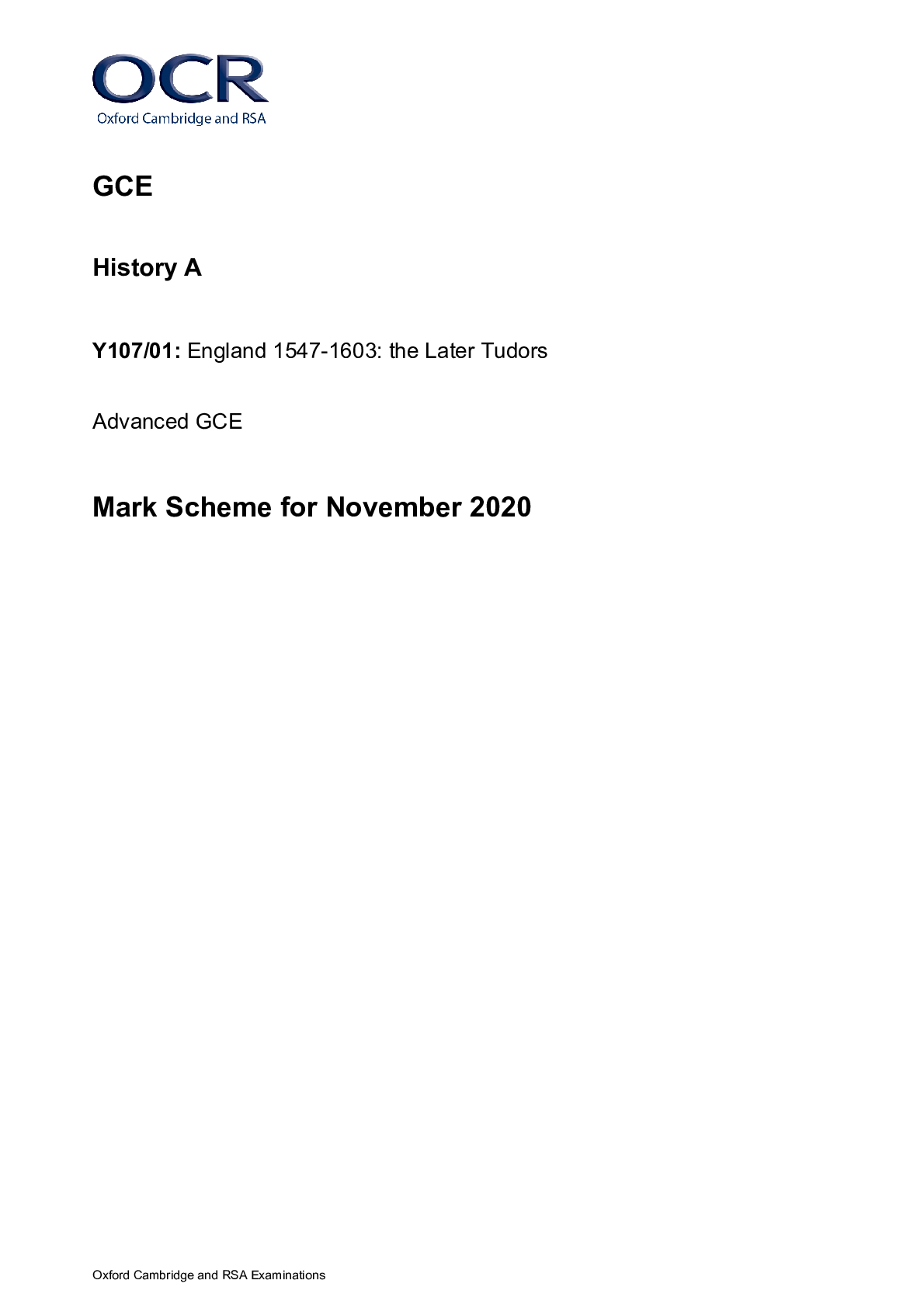
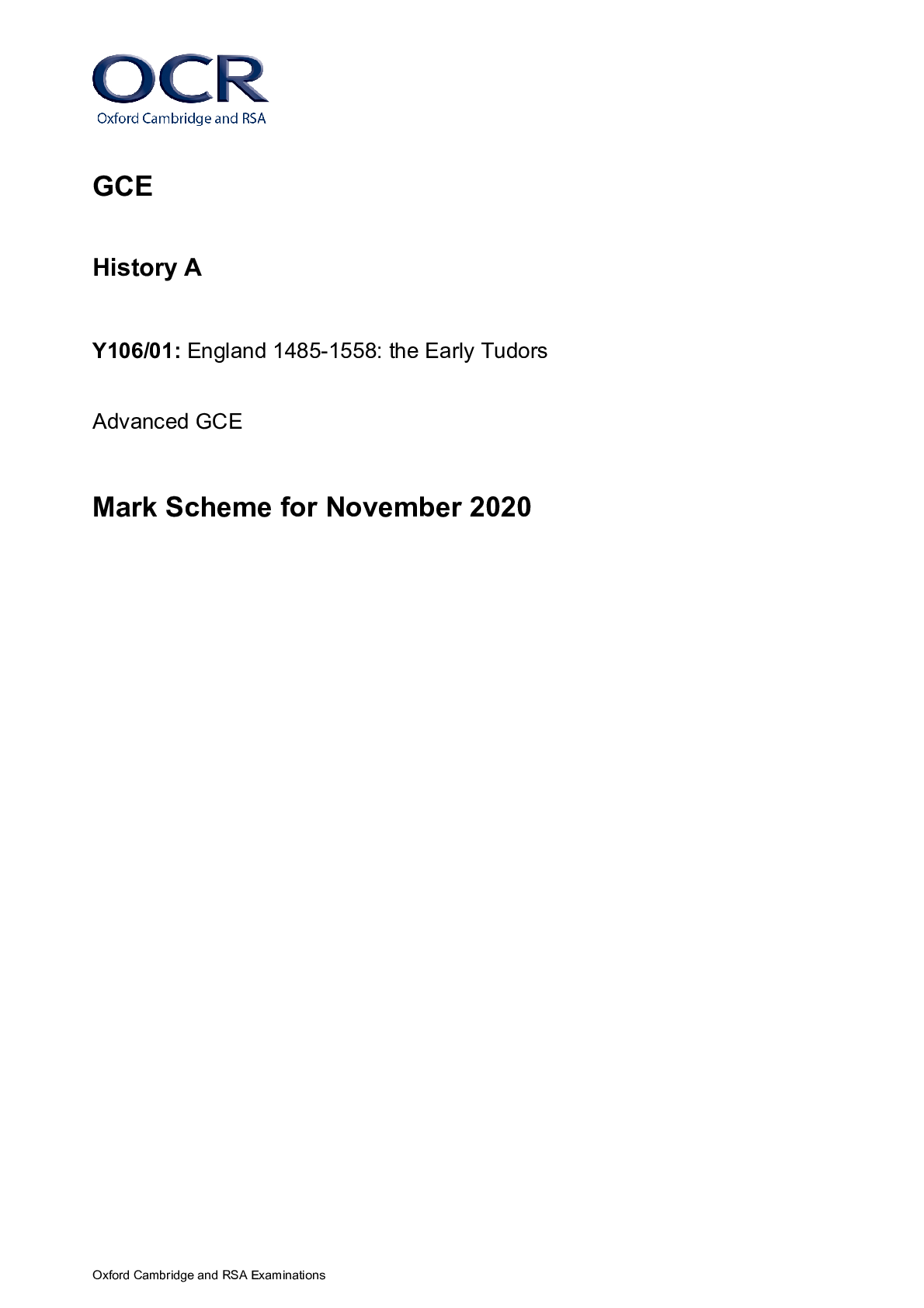
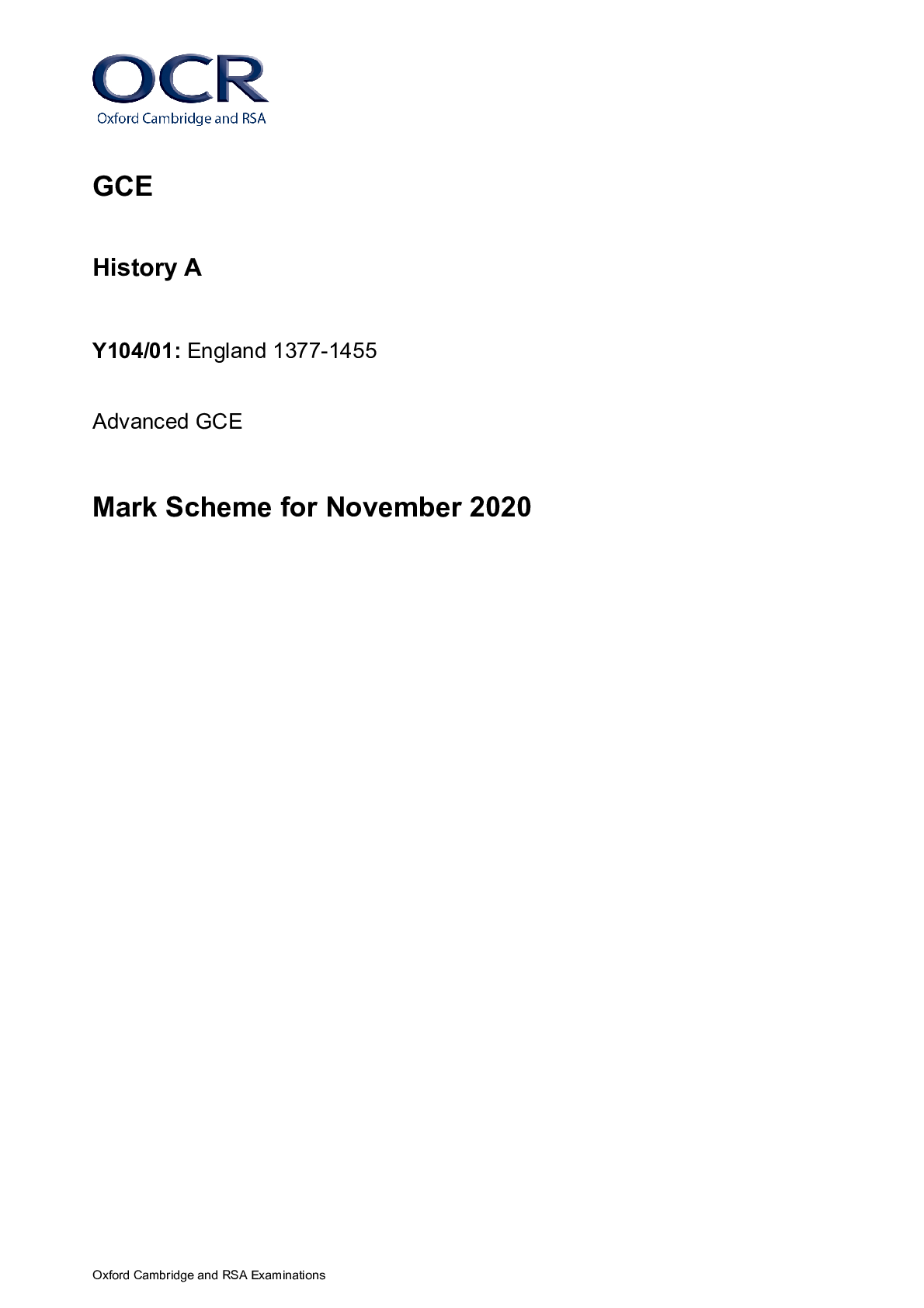
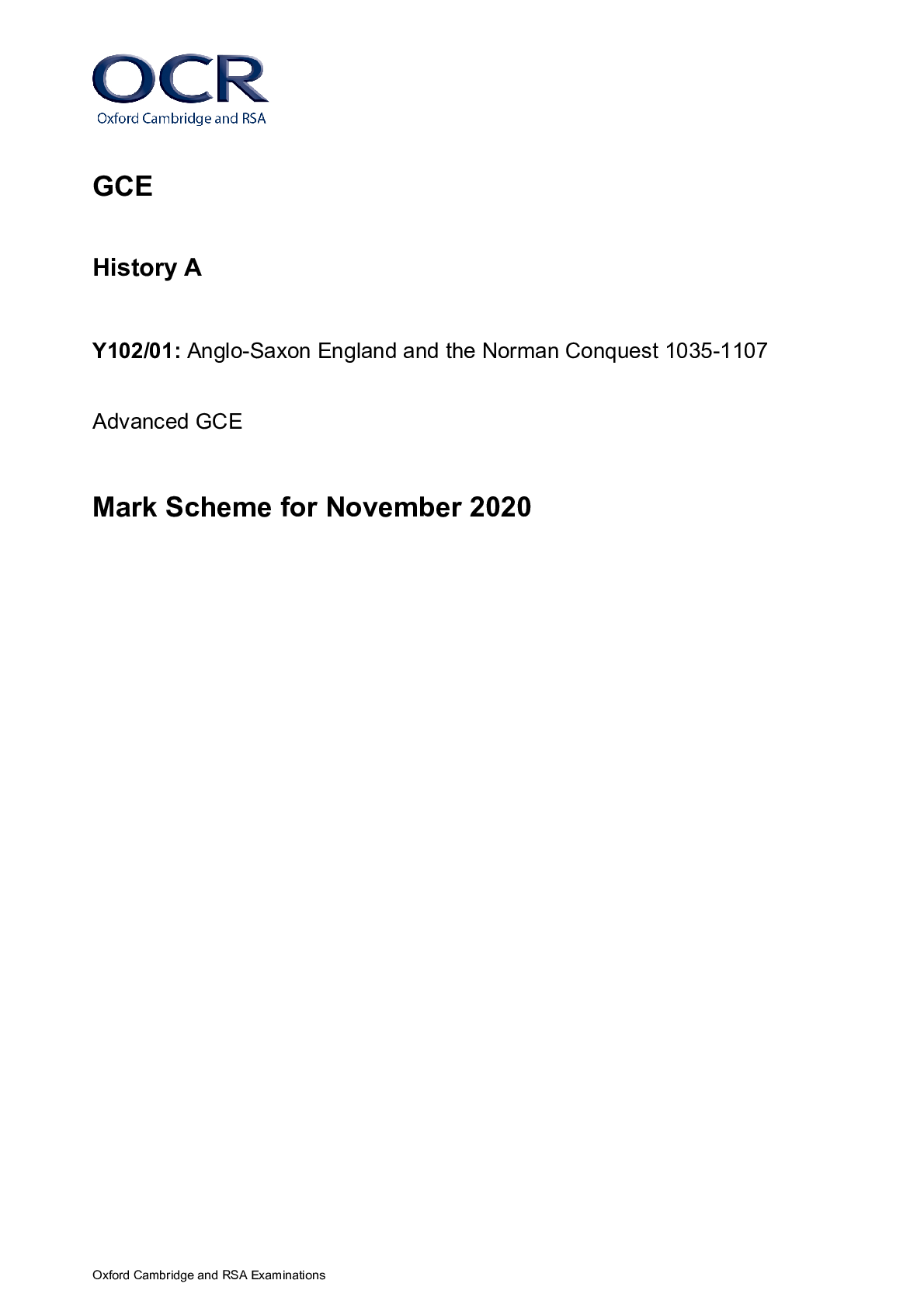
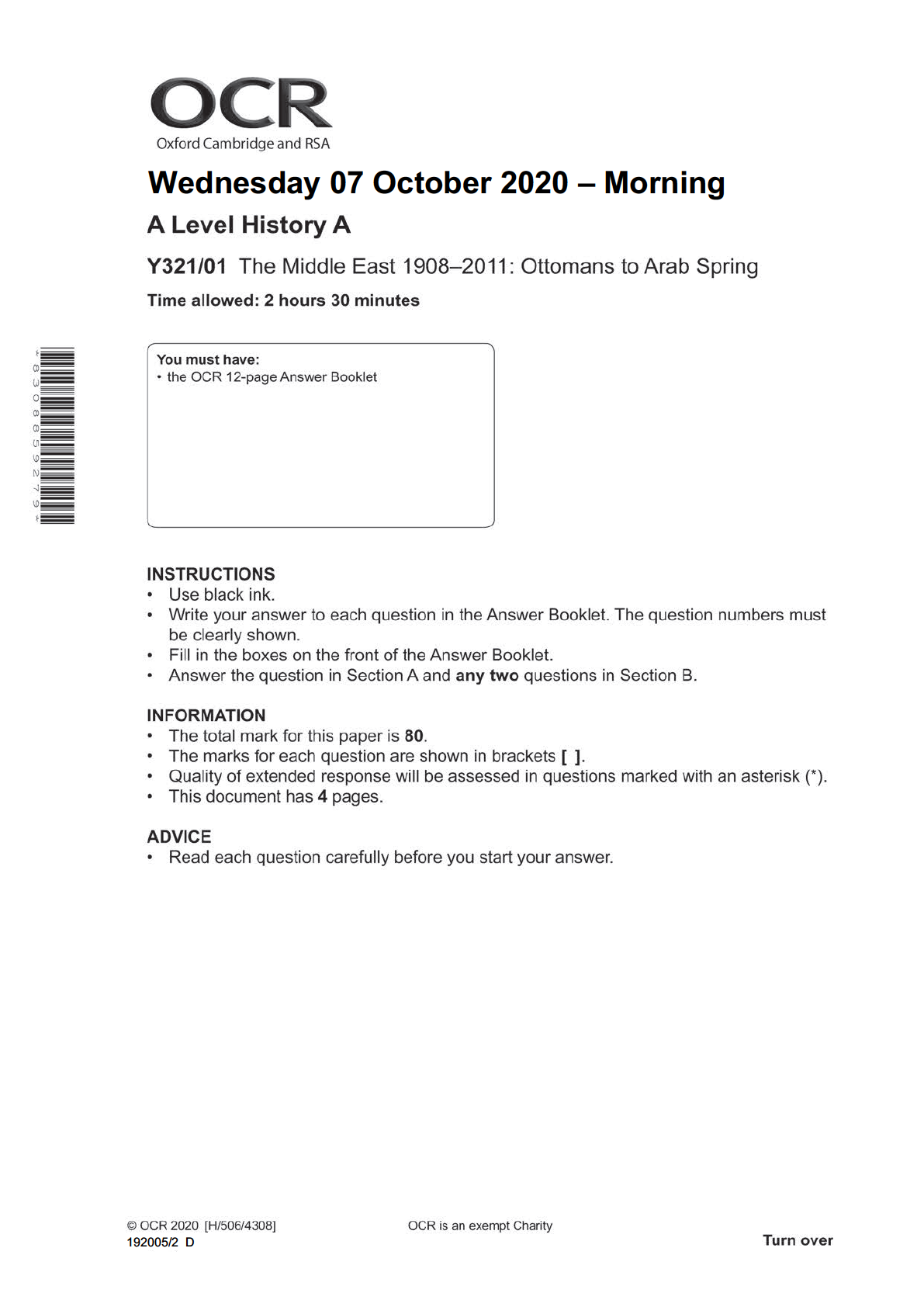
.png)

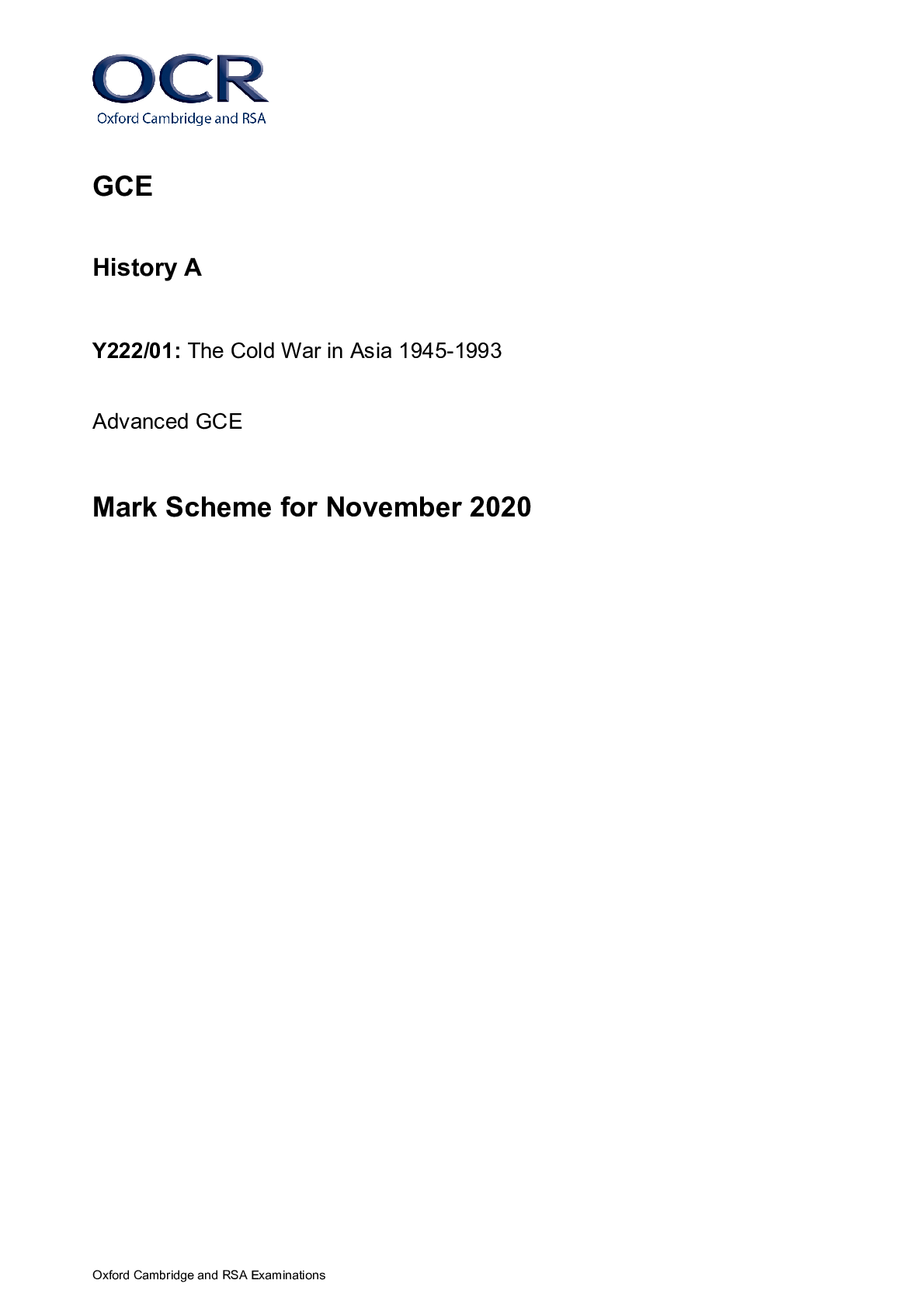


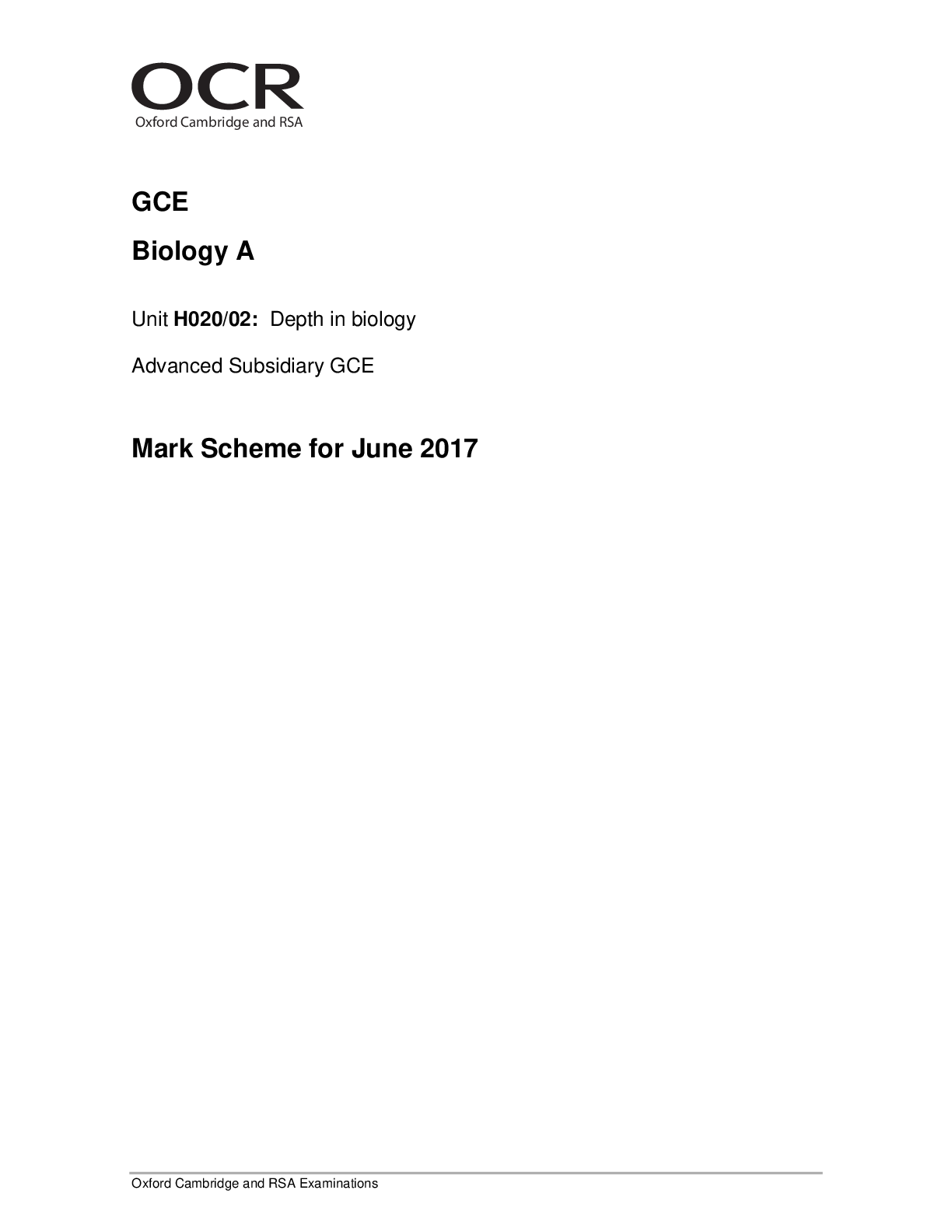
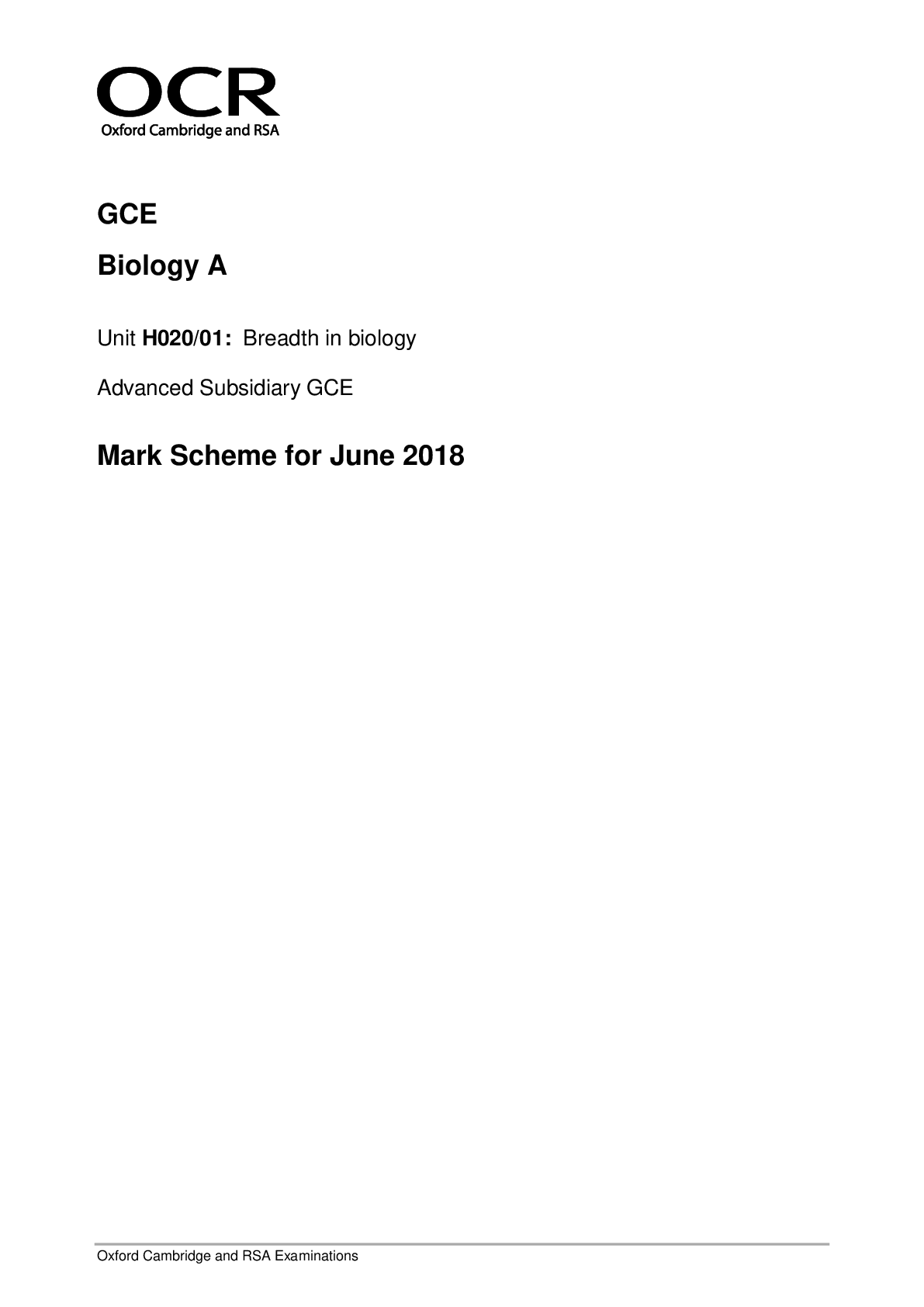

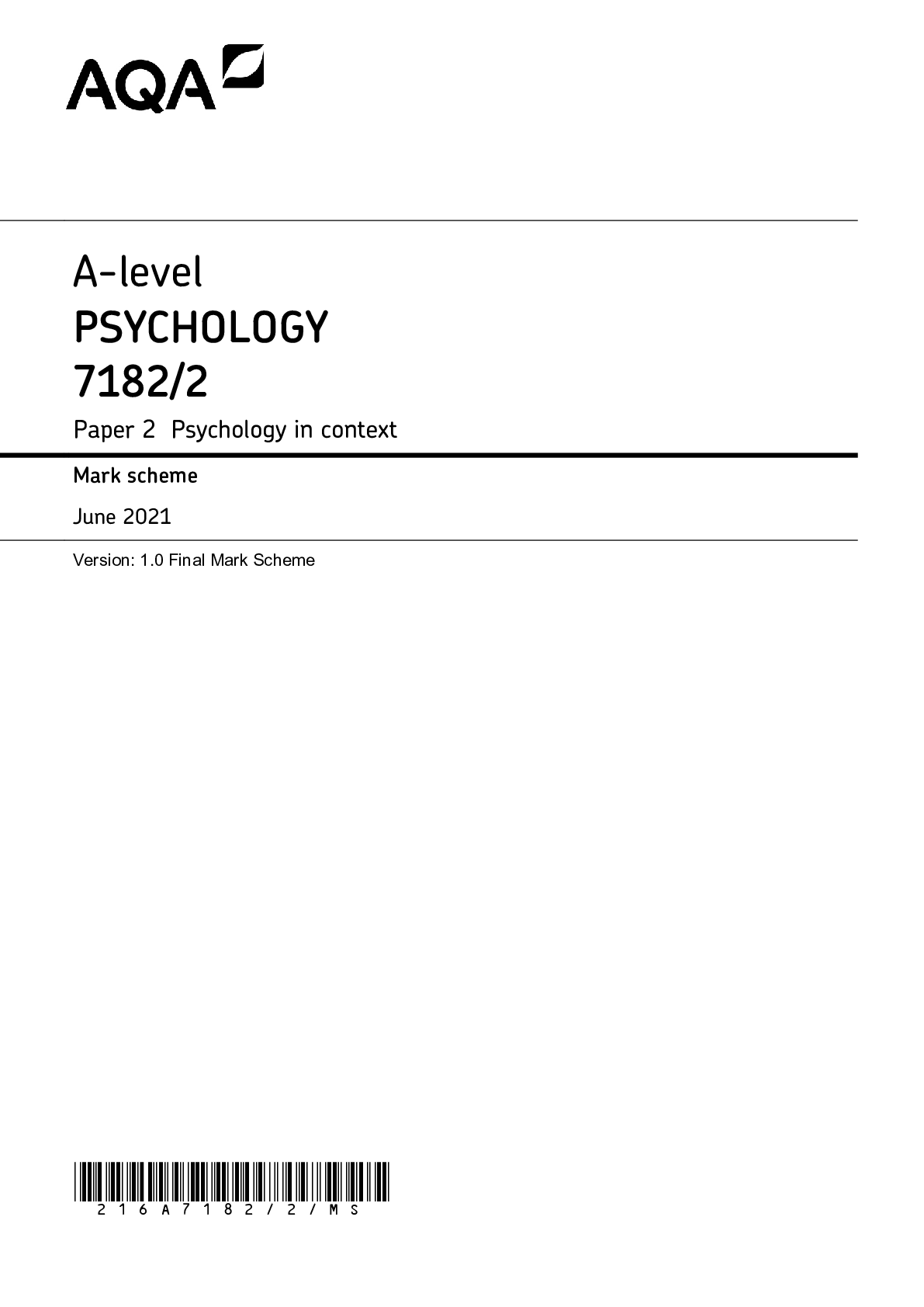
.png)






